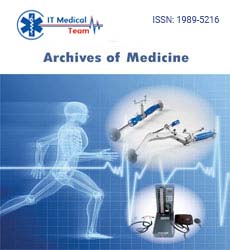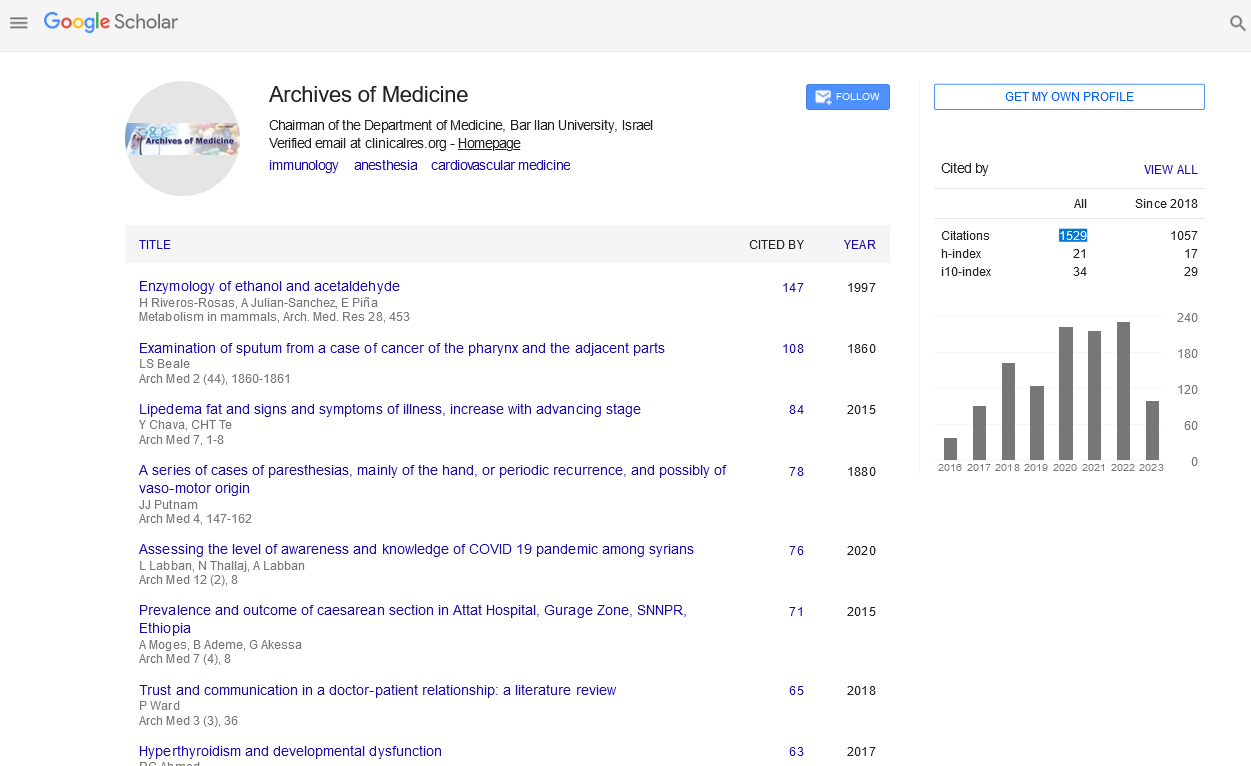Commentary - (2023) Volume 15, Issue 4
Environmental medicine: The critical link between human health and the environment
Karen Kemple*
Department of Science, Ibaraki University, Mito City, Japan
*Correspondence:
Karen Kemple, Department of Science, Ibaraki University, Mito City,
Japan,
Email:
Received: 03-Jul-2023, Manuscript No. ipaom-23-13902;
Editor assigned: 05-Jul-2023, Pre QC No. P-13902;
Reviewed: 17-Jul-2023, QC No. Q-13902;
Revised: 22-Jul-2023, Manuscript No. R-13902;
Published:
29-Jul-2023
Description
In recent decades, there has been an increasing
recognition of the profound impact that the environment
has on human health. The emerging field of environmental
medicine seeks to understand and address the complex
interactions between environmental factors and human
well-being. From air and water pollution to hazardous
chemicals and climate change, environmental medicine
investigates the potential health risks associated with
these factors and explores strategies to mitigate their
harmful effects. In this article, we delve into the realm of
environmental medicine, examining its importance, key
areas of focus, and the role it plays in safeguarding our
health and the planet [1].
Environmental medicine, also known as environmental
health or environmental toxicology, encompasses the study
of how environmental factors influence human health. It
adopts an interdisciplinary approach, drawing knowledge
and insights from various fields such as medicine, toxicology,
epidemiology, and environmental science. By analyzing
the interactions between environmental exposures and
human biology, environmental medicine sheds light on
the mechanisms underlying the development of diseases
and disorders linked to the environment. Environmental
factors affecting human health:
Air pollution: Air pollution, a major environmental
challenge, poses severe health risks. Particulate matter
(PM), ozone (O3), nitrogen dioxide (NO2), and sulfur
dioxide (SO2) are some of the pollutants that can harm
respiratory function, aggravate cardiovascular conditions,
and contribute to the development of respiratory diseases
like asthma and Chronic Obstructive Pulmonary Disease
(COPD).
Water contamination: Access to clean and safe
water is crucial for maintaining human health. However,
various contaminants can enter water sources, including
heavy metals, pesticides, pharmaceuticals, and microbial
pathogens. Consuming contaminated water can lead to
gastrointestinal illnesses, poisoning, and long-term health
effects [2].
Chemical exposures: Everyday products, such as
cleaning agents, cosmetics, and pesticides, may contain
harmful chemicals that can have detrimental effects on
human health. Exposure to substances like lead, mercury,
phthalates, and Bisphenol A (BPA) has been associated
with developmental disorders, hormonal disruptions,
neurological damage, and increased cancer risks.
Climate change: The changing climate is another
critical environmental factor impacting human health.
Rising temperatures, extreme weather events, changing
disease patterns, and altered ecosystems contribute to
increased risks of heat-related illnesses, vector-borne
diseases, respiratory problems, and mental health issues.
Key Areas of Focus in Environmental Medicine:
Risk assessment: Environmental medicine evaluates
the potential health risks associated with specific
environmental exposures. By studying exposure pathways,
toxicological data, and epidemiological studies, experts
can identify and quantify the health risks posed by certain
substances or environmental conditions. This knowledge
informs policy decisions and helps develop strategies for
risk mitigation.
Prevention and intervention: Environmental
medicine emphasizes prevention strategies to reduce
exposure to hazardous environmental factors. This includes
implementing regulations and standards, promoting
sustainable practices, and raising awareness among
individuals and communities. Additionally, the field
explores interventions to mitigate the health effects of
environmental exposures and supports the development of
protective measures and technologies [3].
Policy development: Environmental medicine
plays a pivotal role in shaping environmental and public health policies. The field provides scientific evidence
to inform regulatory frameworks, influences decisionmaking
processes, and advocates for protective measures.
By integrating environmental health considerations into
policy development, environmental medicine strives to
create healthier and more sustainable communities.
The importance of collaboration: Environmental
medicine relies on collaboration among healthcare
professionals, researchers, policymakers, and the public
to achieve its goals. Cooperation across disciplines
helps bridge gaps in knowledge, fosters innovation, and
promotes holistic approaches to environmental health. By
involving communities and individuals in decision-making
processes, environmental medicine ensures that diverse
perspectives are considered, resulting in more effective and
equitable solutions [4].
Environmental medicine stands at the forefront of
addressing the intricate relationship between human
health and the environment. Through its multidisciplinary
approach, the field identifies the environmental factors
that impact health and develops strategies to mitigate their
adverse effects. By emphasizing prevention, research, and
policy development, environmental medicine strives to
create a healthier future for individuals and the planet.
As awareness grows and scientific understanding deepens,
environmental medicine will continue to play a vital role
in safeguarding our well-being in an increasingly complex
world [5].
Acknowledgement
None.
Conflict of Interest
None.
References
- Björlenius B, Ripszám M, Haglund P, et al. Pharmaceutical residues are widespread in baltic sea coastal and offshore waters–screening for pharmaceuticals and modelling of environmental concentrations of carbamazepine. Sci Total Environ. 2018;633:1496-1509.
Google Scholar, Crossref, Indexed at
- Liu JL, Wong MH. Pharmaceuticals and Personal Care Products (PPCPs): A review on environmental contamination in China. Environ Intern. 2013;59:208-224.
Google Scholar, Crossref, Indexed at
- Luís S, Lima ML, Poggio L, et al. Lay people and experts’ risk perception of pharmaceuticals in the environment in southwestern Europe. Regul Toxicol Pharmacol. 2020;117:104783.
Google Scholar, Crossref, Indexed at
- Persson M, Sabelström E, Gunnarsson B. Handling of unused prescription drugs—knowledge, behaviour and attitude among Swedish people. Environ Int. 2009;35(5):771-774.
Google Scholar, Crossref, Indexed at
- Sörengård M, Campos-Pereira H, Ullberg M, et al. Mass loads, source apportionment, and risk estimation of organic micropollutants from hospital and municipal wastewater in recipient catchments. Chemosphere. 2019;234:931-941.
Google Scholar, Crossref, Indexed at






